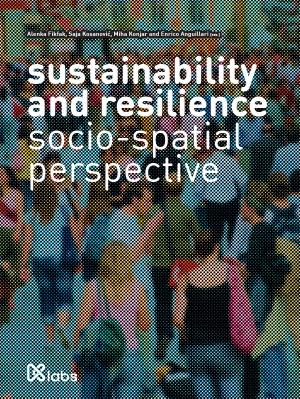Hosted by
sustainability and resilience: socio-spatial perspective
Synopsis
Sustainability and resilience have become indispensable parts of the contemporary debate over the built environment. Although recognised as imperatives, the complexity and the variety of interpretations of sustainability and resilience have raised the necessity to again rethink their notion in the context of the built environment and to reframe the state-of-the-art body of knowledge.
The purpose of this book is to present ongoing research from the universities involved in the project Creating the Network of Knowledge Labs for Sustainable and Resilient Environments (KLABS). The book Sustainability and Resilience: Socio-Spatial Perspective so begins with the exploration of the broadest conceptual frame-of-reference of issues related to sustainability, and the re-establishment of the connection between the built environment and the conditions that are vital to its functioning, primarily in relation to energy, land use, climate, and economy. Subsequent discussion on resilience as a term, approach, and philosophy aims to conceptualise an interpretation of key resilience concepts, explain relationships and links among them, and propose the classification of resilience as applicable to the context of urban studies.
By studying the processes of transition of the built environment, the book then reveals a coherent formula of ‘thinking sustainability + resilience’ aimed at improving the ability to respond to disruptions and hazards while enhancing human and environmental welfare. The necessity to integrate the two approaches is further accented as a result of a deliberative discourse on the notions of ‘social sustainability’, ‘sustainable community’, and ‘socio-cultural resilience’. The potential of measuring sustainable development and urban sustainability on the basis of defined social, human, and, additionally, natural and economic values is presented through an overview of different well-known indicators and the identification of a currently relevant tangible framework of sustainable development.
Correspondingly, the role of policies and governance is demonstrated in the case of climate-proof cities. In this way, the consideration of approaches to sustainability and resilience of the urban environment is rounded, and the focus of the book is shifted towards an urban/rural dichotomy and the sustainability prospects of identified forms-in-between, and, subsequently, towards the exploration of values, challenges, and the socio-cultural role in achieving sustainability for rural areas. In the final chapters, the book offers several peculiarized socio-spatial perspectives, from defining the path towards more resilient communities and sustainable spaces based on a shared well-being to proposing the approach to define community resilience as an intentional action that aims to respond to, and influence, the course of social and economic change, to deliberating the notion of a ’healthy place’ and questioning its optimal scale in the built environment.
The study of sustainability and resilience in this book is concluded by drawing a parallel between environmental, economic, and social determinants of the built environment and the determinants that are relevant to human health and well-being.

